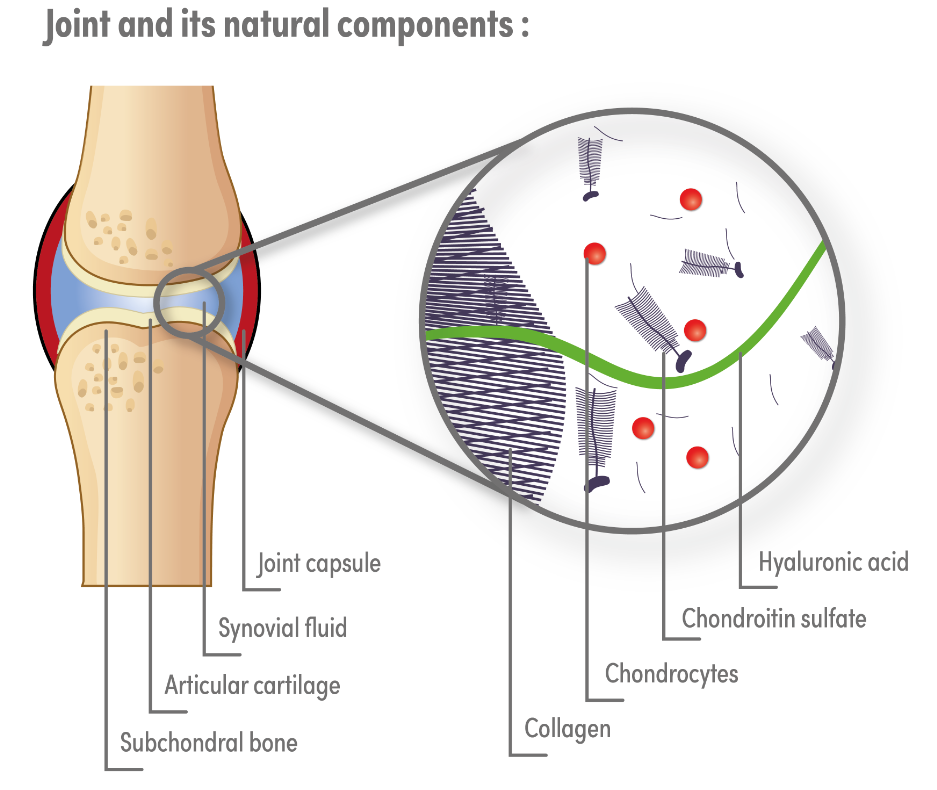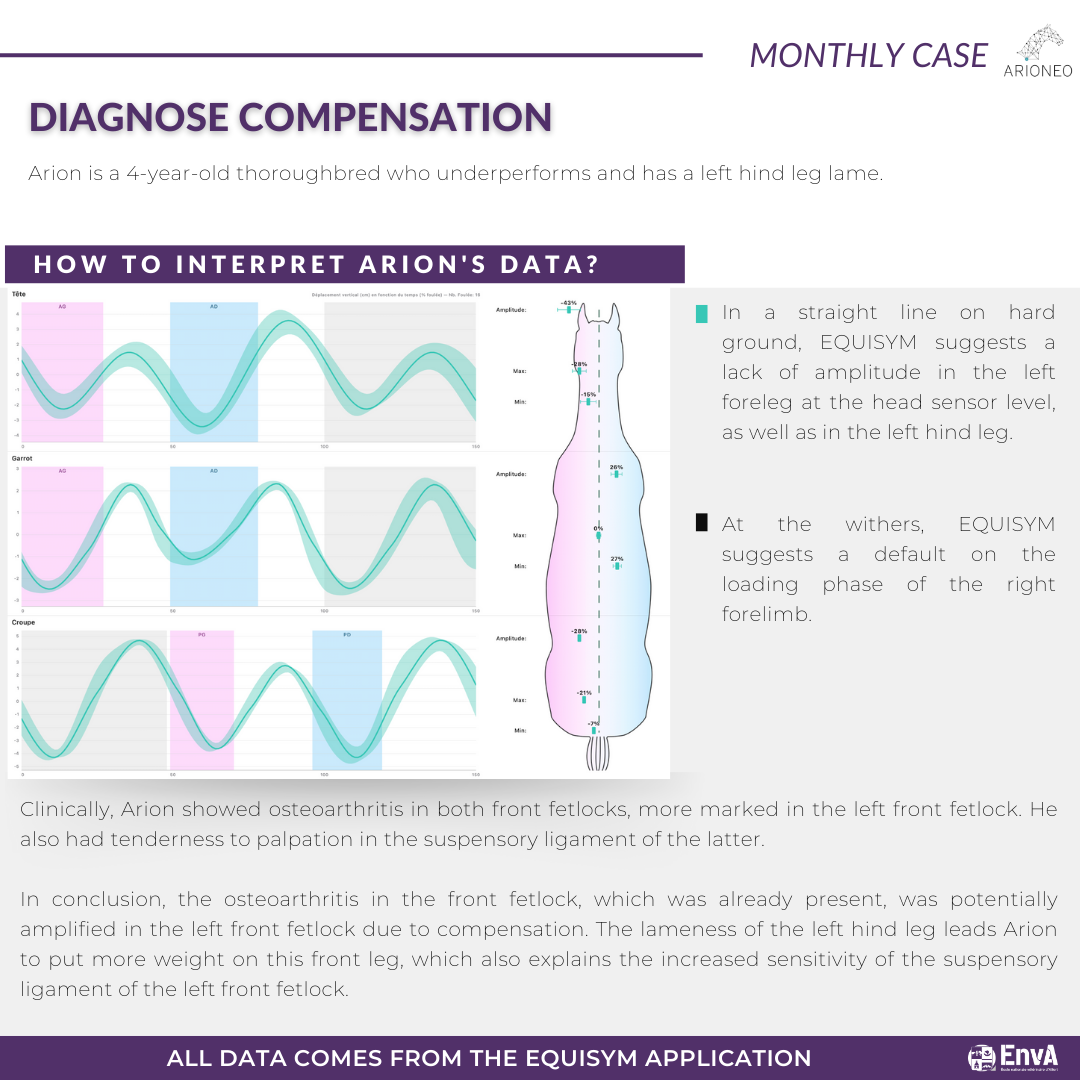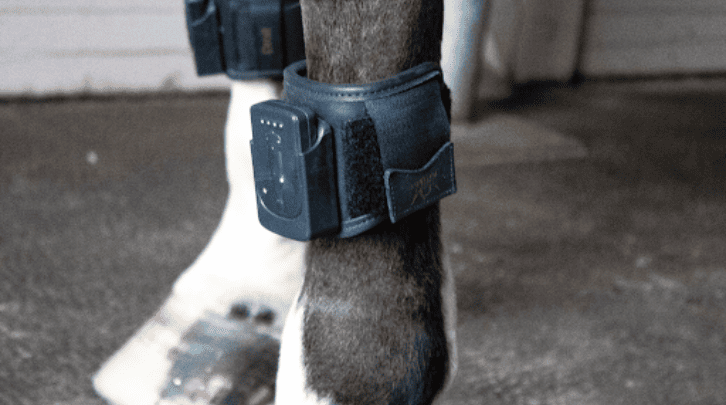Joint health is an essential pillar of performance and well-being for athletic horses. Racehorses, show jumpers, and dressage horses are subjected to intense stress on their joints, making them particularly vulnerable to injury and pathology.
Today advances in joint surgery offer innovative solutions for treating joint injuries and prolonging horses’ sporting careers. However, the success of these operations is not limited to the surgical procedure itself. It also depends on post-operative care, management of mechanical compensations and accurate assessment of locomotion during rehabilitation.
Joints in horses
Horses’ joints play a crucial role in their ability to perform. This is especially true of athletic horses taking part in demanding activities such as racing, show jumping, or dressage. Joint health is essential to ensure not only optimal performance but also the long-term well-being of horses.
The importance of joint health in athletic horses

Joints are the connecting points between bones, enabling the fluid movement and flexibility required for the various equestrian disciplines. They are made up of cartilage, synovial membranes that produce synovial fluids, the joint capsule, and joint cavity. Each plays a specific role in supporting and protecting against impact and friction.
https://audevard.com/espace-sante-cheval/les-articulations-du-cheval
In athletic horses, the joints are particularly put to the test. Repetitive movements, high impacts, and heavy loads can lead to premature wear of the cartilage. But this can also lead to inflammation and other joint pathologies. Healthy joints enable horses to maintain a maximum range of motion and optimum muscle power.
Impact of joint problems on horses
Joint problems such as arthritis, ligament damage, and cartilage tears can seriously affect mobility and cause chronic pain. These conditions not only reduce the horse’s ability to perform but can also considerably shorten his sporting career. Prevention, early detection, and treatment of joint disorders are therefore top priorities for owners and veterinarians.
Furthermore, horses with healthy joints are less likely to develop undesirable mechanical compensations. These compensations result from involuntary adjustments in their gait to avoid pain. These can lead to muscle imbalances and additional stress on other parts of the body, exacerbating the risk of further injury.
In short, joint health is a key factor in the performance and well-being of athletic horses. Advances in veterinary medicine and joint surgery offer promising prospects for the effective treatment of these pathologies. As a result, horses can more easily maintain and regain their athletic potential.
Joint surgery types and techniques
Most surgeries are performed using minimally invasive techniques. We’re talking about incisions of no more than 4 millimeters. Nevertheless, some procedures are heavier and involve greater constraints.
Description of the main joint surgeries: arthroscopy, arthroplasty, etc.
Arthroscopy: Arthroscopy is a minimally invasive surgical technique that enables veterinarians to examine the inside of a joint and treat lesions with greater precision. It is often used to remove bone fragments, smooth cartilage surfaces or treat inflammation. This method is favored for his ability to reduce surgical trauma and promote faster recovery.
Arthroplasty: Arthroplasty is a more extensive procedure designed to partially or replace a damaged joint. It is generally performed after severe injury or degradation due to osteoarthritis. It is a more invasive procedure, often reserved for horses whose performance or quality of life is seriously compromised.
Joint fusion (arthrodesis): This technique involves stabilizing a joint by permanently fusing it, often to reduce pain in cases of severe degeneration. Although it restricts joint movement, it allows horses to regain a certain level of comfort.
Tenoscopy: Tenoscopy is a procedure that can be compared to arthroscopy. Like arthroscopy, it is a minimally invasive technique used to inspect tendon sheaths. This enables veterinarians to flush out and clean up infections, remove damaged tissue, or repair torn tendons or ligaments.
Surgical process for each type of surgery
Pre-operative preparation: Every joint surgery begins with a thorough evaluation, including X-rays, MRI, or ultrasound scans to determine the extent of the lesion. The horse is then anesthetized and positioned to facilitate access to the affected joint.
Arthroscopy & tenoscopy: The surgeon makes small incisions in the skin to insert an arthroscope (camera) and miniature surgical instruments. This procedure enables the surgeon to operate with a clear view, minimizing damage to surrounding tissue. This is the preferred procedure for most joint operations.
Arthroplasty: This procedure involves opening up the affected joint and replacing or rebuilding damaged structures (e.g. cartilage). This requires rigorous post-operative monitoring to avoid infection and ensure proper recovery.
Post-op: After the operation, intensive care is provided to manage pain and avoid complications. Rehabilitation begins as soon as possible to restore mobility to the operated joint.
Recent innovations and technologies.
Computer-assisted surgery: Thanks to 3D imaging and surgical navigation technologies, veterinarians can plan and execute more precise interventions, with minimal damage to tissues.
Biomaterials and resorbable implants: These innovations make it possible to restore joint surfaces or strengthen bone structures while reducing the risk of rejection or long-term complications.
Tecatherapy: This technology is used to stimulate and accelerate the body’s natural healing process (homeostasis). Two electrodes are installed and emit electricity at different frequencies. The aim is to treat conditions such as osteoarthritis.
Laser therapy: This technique uses light energy, with a frequency close to infrared, to stimulate cellular metabolism. The laser’s effect is to raise tissue temperature, amplifying blood microcirculation. The benefits for the horse include analgesic and anti-inflammatory effects, as well as improved tissue regeneration and healing.
Complementary biological treatments: Techniques such as the injection of stem cells or platelet-rich plasma (PRP) are often used to accelerate the healing of damaged joint tissue.
Post-operative results
Analysis of success rates for different surgical procedures
Success rates for joint surgery in horses vary according to the nature of the procedure and the pathology being treated. Arthroscopy, in particular, has high success rates, especially for horses with cartilage lesions or early arthritis. Arthroplasty, on the other hand, although more invasive, can offer a long-term solution for more severe cases, but with a longer recovery time.
Statistics show that around 80-90% of horses recover completely after arthroscopy. While more complex procedures, such as arthroplasty, can achieve success rates of 60-70%, with variations depending on the severity of the initial pathology and the quality of post-operative care.
Factors influencing results: type of injury, pre-operative state of health, rehabilitation.
Type of lesion: A minor lesion, treated early, is more likely to heal completely, whereas advanced pathologies may require more extensive interventions and prolonged recovery time.
Pre-operative health: A horse in good general health prior to surgery has a better chance of a rapid recovery. Age and physical condition are also factors that can impact recovery time.
Rehabilitation: The quality of post-operative care, including pain management and physiotherapy, is crucial to the success of surgery. Post-operative care also involves good management of the horse’s environment, as well as a balanced diet adapted to the horse’s needs.
Mechanical compensation and quantification of postoperative locomotion
Explanation of post-surgical compensation mechanisms and their impact
Horses often develop compensatory mechanisms to protect the operated joint. These compensations may include a change in gait, overuse of other limbs, or reduced movement in the affected area. These temporary adjustments are a natural response to pain or discomfort.
Mechanical compensations can hinder rehabilitation by increasing stress on other parts of the body. These compensations can lead to new injuries (such as tendonitis or desmitis). What’s more, these adjustments can slow down the rehabilitation of the operated joint, prolonging the time needed to regain a natural gait and optimal performance.
Compensation example

Strategies for minimizing undesirable compensations through rehabilitation.
Post-operative rehabilitation is crucial to minimize compensation. It includes progressive exercises to restore joint strength and mobility without overload. The use of temporary support devices can also help maintain balance and reduce unwanted compensations.
The use of locomotion analysis tools
The use of performance and health monitoring technologies in horses, particularly in the post-operative period, offers significant advantages for veterinarians and owners alike. Thanks to devices such as Equimetre and Equisym sensors, it is possible to collect real-time data on locomotion, heart rate and other physiological parameters essential for monitoring rehabilitation. These tools enable the rapid detection of recovery anomalies, such as mechanical compensations or imbalances, often invisible to the naked eye. By providing objective, precise information, these technologies make it easier to adapt treatments and rehabilitation programs. This precision also makes it possible to adapt care plans and thus optimize recovery and return to performance. However, they are not limited to the post-operative phase, as they can also be used to monitor the horse’s general state of health throughout its career. This management of their well-being and recovery helps prevent injury and prolong their athletic performance.
Collecting this data also provides long-term traceability, enabling comparisons to be made and improvements to be noted. This can be useful for post-operative follow-up. For example, Isaure Cottreau, manager of Balnéo Sports Horses, uses EQUISYM to monitor horses with health problems (e.g. tendonitis). For her, the benefit is in reworking horses in the right direction and optimizing care.
Conclusion
Joint health in athletic horses is an essential factor in their care. As they are more at risk due to the intensity of their training and physical effort, it’s important to pay close attention.
Advances in joint surgery offer effective and less restrictive solutions for treating joint injuries. However, these interventions are only part of the solution. Successful recovery also depends on the quality of post-operative care, appropriate rehabilitation, and management of mechanical compensations. A global approach, including technological innovations and precise rehabilitation protocols, maximizes the chances of recovery and ensures optimum performance while prolonging the horses’ sporting careers.
Tools such as EQUISYM are used to help prevent potential joint problems (particularly with the compensation mechanism). But also to help with post-operative follow-up.
SOURCES :
- https://www.equitom.be/fr/medical-services/surgery/tenoscopie/
- https://www.equitom.be/fr/medical-services/surgery/arthroscopie/?highlight=arthroscopie
- https://www.cheval-energy.com/fr/cheval-energy-academy/post/les-nouvelles-techniques-de-soin-du-cheval-le-laser.html
- https://vet.arioneo.com/blog/temoignage-suivi-de-rehabilitation-dune-jument-de-sport-cso/
- https://www.lepointveterinaire.fr/publications/la-semaine-veterinaire/article/n-1457/le-taux-de-complications-de-l-arthroscopie-est-inferieur-a-celui-des-techniques-classiques.html
Keywords : Arioneo, surgery, joint, horse, athlete, locomotion, postoperative, health, wellness



